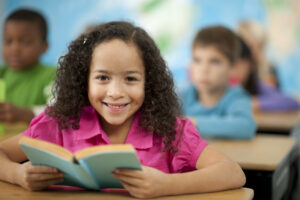The kindest and most wonderful memories of each person remain from childhood, when he is surrounded by the care, affection and love of his most dear people and sight words for kindergarten.
To fill your child’s life emotionally, introduce music and its various forms and expressions as early as possible. Let’s remember the first movies. After all, they were silent and, in order to convey the emotions, mood and dynamics of the picture, to highlight important moments, the film from beginning to end was accompanied by an appropriate musical coloring. The music reflected everything that was happening on the screen and enhanced the effect of what he saw.
Children’s music has always been one of the main directions in the cultural and aesthetic education of children. Music helps the child’s emotional development, enriches his imagination, helps to learn to move rhythmically and beautifully. Melodic beautiful music evokes a smile and a positive attitude even in the smallest children.
Musical education and cogat test grade 1 also includes various forms of musical expression. Such as the ability to listen to and perceive music, singing, dancing and the actual mastery of playing musical instruments.
With regular listening to music, the child develops perseverance. Listening to music, the child will learn to dream, imagine some images or remember situations that are already familiar to him. Discussion of the listened work will teach the child to speak about music, to trace the development and dynamics of a musical work. It has been scientifically proven that music has only a positive effect on a child, of course, we are not talking about aggressive, heavy music.
To make it interesting for your child, include various musical games for variety: invite your child to express the character of the work with the help of movements or facial expressions, you can also “connect” the artistic expression of the music. For example, agree to denote low sounds with dark colors, higher sounds with light colors. And ask the child to draw what he heard after listening to the piece. If a child learns to play an instrument and can already distinguish various instruments in a musical composition, then colors can indicate several instruments that the child already recognizes.
One of the popular forms of musical expression is singing. Medical research has shown that singing not only develops the vocal cords, but also has a beneficial effect on the development of a child’s speech. Speech therapists successfully use singing in their practice. Singing reduces the risk of colds, and also relieves psycho-emotional stress.
Dancing is undoubtedly a favorite pastime of many children. The positive effect of dancing on the entire body of a child is undeniable: it is correct posture, and an improvemen

Elementary school students in a classroom.
t in the plasticity of the body, and the development of a sense of rhythm. The child becomes more adapted, it is easier for him to communicate with peers.
While your child is small and absorbs everything like a “sponge”, it’s time to arouse and maintain interest in mastering a musical instrument. The instrument can be chosen, taking into account the characteristics of the child’s character and his desires. The child will learn to control himself and concentrate, he will develop memory and creative imagination, and skills in acting will appear.
Wonderful children’s composers help us to interest the child and introduce him to the world of music. Children’s music has its own special character – it is simplicity, spontaneity, kindness, that is, those features that are characteristic and understandable for children.
Not a single children’s holiday goes by without music and songs. After all, the music, created especially for children, creates a unique atmosphere of carelessness and joy, preserves these associations with favorite songs in childhood for life.
One of the most famous children’s composers, on whose songs more than one generation of children has grown and raised, Vladimir Yakovlevich Shainsky presented our children with a huge number of amazing songs. This is the beloved, sad “Song of Cheburashka”, humorous songs “Grasshopper”, “Antoshka”, and songs known to all first-graders “What they teach at school”, “Twice two four”.
Many favorite songs were written by Maxim Isaakovich Dunaevsky for films and cartoons, which adults also sing with pleasure: “Once upon a time there was a Bradobrei”, “33 cows”, “I am a water one”, “I don’t want to!” (song of the Princess of Fun).
No children are immune to music. The task of parents is to acquaint their child with various musical manifestations and forms, to develop the talents inherent in nature.